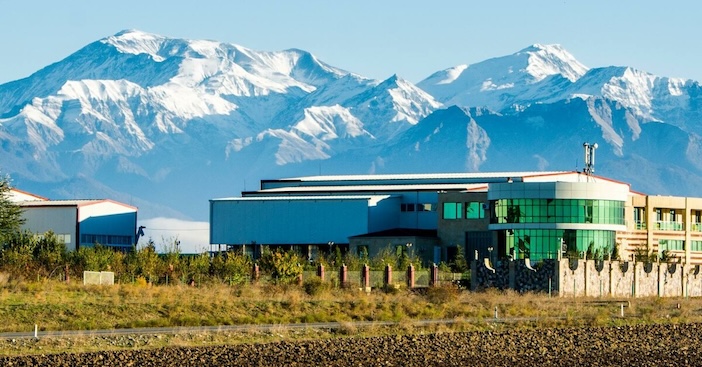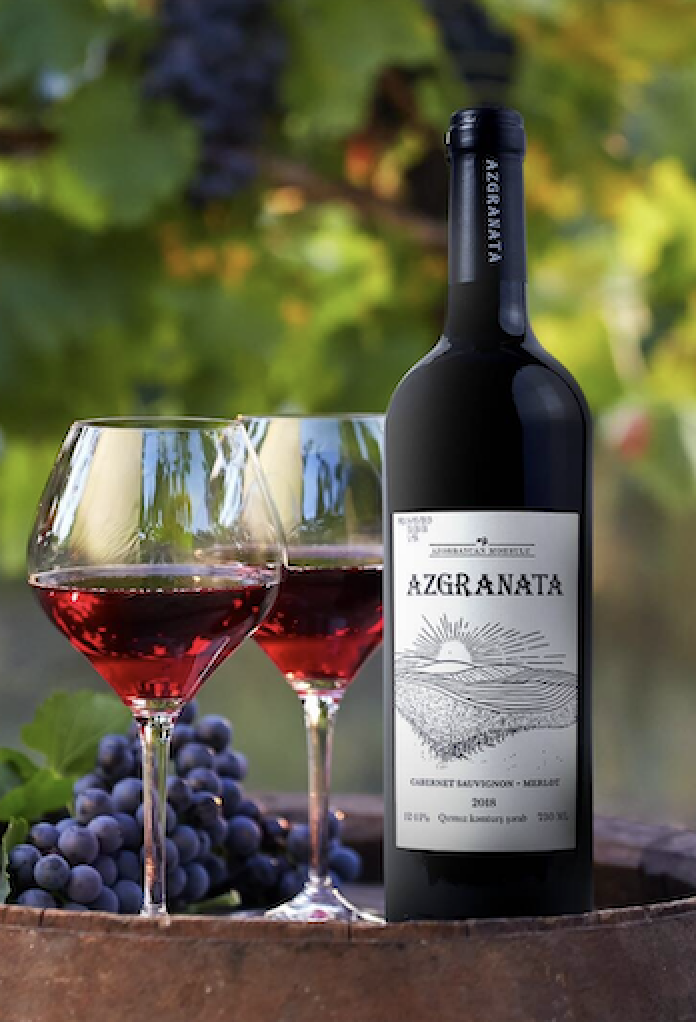Wine tours have become increasingly popular over the last decade or so. France, Italy, Spain – they all have well-trodden routes and vineyards happy to throw open their doors for tastings and tours. If you’re looking for something a little more unusual, however, you could head rather further east to a country that might not be the first that springs to mind when you’re thinking of wine making.
Azerbaijan is a Shia Muslim country, like one of its immediate neighbours, Iran. The two places couldn’t, however, be more different. Azerbaijanis take a liberal approach. They dress western style and enjoy a thriving nightlife with restaurants and wine bars that offer their own heritage wines as well as plenty from Europe. And you’ll find a surprising number of English speakers, too. They are, in fact, delighted to have European visitors and there are a number of European wine makers who have arrived to revitalise the Azeri wine industry – a tradition that has the deepest of roots.

Tugh, western Azerbaijan (photo courtesy of Azerbaijan Tourism)
As with its neighbours, Georgia and Armenia, traces of grape pips, residues and signs of fermentation have been discovered in Azerbaijani clay vessels that date as far back as the fifth millennium BC. It is thought that thick, honey-like wines continued to be produced from grapes (and other fruits, particularly pomegranate, Azerbaijan’s national fruit) even after the Arab conquest and the arrival of Islam in the seventh century, though these were mostly regarded as medicinal and were generally home made.
Interestingly, this all changed in the early nineteenth century when around 1400 settlers arrived from southern Germany, fleeing the Napoleonic Wars and bringing with them a European approach to wine making. Encouraged by the Russian Tsar, Alexander I, they established commercial wineries and by the 1860s were exporting their wines to Russia and Europe. By the early twentieth century, Azerbaijan was producing more than half the wine consumed in the Caucasus.

Savalan winery with the backdrop of the Caucasus
Production continued after the country became a Soviet state in 1922 and the wine industry was nationalised with large-scale collectives established and by the 1970s the industry was employing hundreds of thousands of workers. This all changed, however, with Mikhail Gorbachev’s 1985 initiative, snappily entitled the State Programme for Combating Drunkenness and Alcoholism. You might have thought the problem in Russia would have been vodka. Nevertheless, there was widespread destruction of Azerbaijani vineyards and the industry collapsed. After the Soviet era, wine making began its recovery and there are now some 20,000 hectares of vines under cultivation, and experts from Moldova and Italy have arrived to revive it using imported European varieties as well as the local Caucasian ones.
Azerbaijan is a big country and there are several wine making regions but perhaps the most stunning are those in the foothills of the Caucasus Mountains that give the vineyards here the most extraordinary of backdrops. I discovered some of them on a trip with local tour operator Pasha Travel, specialists in wine tours, starting at the Azgranata Winery – it derives its name from “granat”, or pomegranate, and it does make some pomegranate wine alongside more conventional varieties. Run by Moldovan Viktor Bankov since its foundation in 2011, they have a number of wines made from one of the most important heritage Caucasian grapes, the unlikely named Madrasa (“When we started it tasted like raisins and asphalt – it’s rather better now,” says Viktor and indeed it is).
Azgranata is a vast estate of 450 hectares and their range covers reds, rosés and white wines, as well as a recent foray into sparkling wines with European varieties of grape (Chardonnay, Merlot, Sauvignon) alongside traditional local ones. Azgranata is part of a sizeable industrial group that also produces tea and rice in the south of the country. A smaller set-up altogether is the Chabiant Winery, run by Florentine Marco Catellani who learned his oenologism in the vineyards of Tuscany.
is a vast estate of 450 hectares and their range covers reds, rosés and white wines, as well as a recent foray into sparkling wines with European varieties of grape (Chardonnay, Merlot, Sauvignon) alongside traditional local ones. Azgranata is part of a sizeable industrial group that also produces tea and rice in the south of the country. A smaller set-up altogether is the Chabiant Winery, run by Florentine Marco Catellani who learned his oenologism in the vineyards of Tuscany.
Located in the scenic hills of the Ismayilli region, it’s a landscape that’s not so very different from home for Catellani who has transformed the original state farm here into a modern winery since his arrival in 2017. The vines grow in the hills (at 600 to 1000m altitude) and, above them, eagles soar on thermal currents and, at the very start of October, the distant mountains, silhouetted against a deep blue sky, have already got their first smattering of snow.
As well as Madrasa and the local white grape Bayan Shira, there are Georgian and Caucasian varieties like Mtsvane, Rkatsiteli and Saperavi. There is definitely an Italian flair at play here in the style of the wines and Catellani blends, for instance, Madrasa with Cabernet Sauvignon and Saperavi in some excellent reds. His declared aim is to move even further in the direction of quality over quantity. Currently, Russia is the main market for Azerbaijani wines but they are just beginning to appear in Europe.

Savalan (Photo by Seljan Salimova, courtesy of Unsplash)
At Savalan, for instance, they sell their wines in the Netherlands and Belgium. Their vineyard (some 360 hectares) is located in the picturesque Gabala region (where you’ll also find the museum and nearby excavations that have discovered some of the earliest evidence of wine making). The climate here is quite similar to southern Italy and so, again, there is an Italian chief wine technologist, Elisa Vagnoni and head oenologist Daniel D’Andrea who have brought their expertise to Azerbaijan. Interestingly, they have chosen to go the route of European rather than local grapes and produce some very fine wines indeed. I particularly like their fresh, clean Riesling, fruity Sauvignon Blanc and pure Pinot Noir Rosé.
As a completely different approach to wine making, there are tiny boutique wineries now springing up in the country with the emphasis on small quantities and high quality. Farhad Aghayev (he’s a surgeon in his day job) started with one hectare (a present from his father) and now has six. He currently grows only Italian grapes though that is set to change as he plans to plant local varieties next. Located in the northern Khachmaz region, not far from the Caspian, they hand harvest the grapes (not uncommon in Azerbaijan) and age the wine without filtration for a more complex flavour. They are especially proud of their Pet-Nat sparkling wine and Nessum Dorma (maybe a reference to the long hours everyone puts in during the harvest), aged in French oak barrels and amphora resulting in a complex, well-balanced flavour.

Kefli Wine Bar, Baku
Touring Azerbaijan you find deep forests, rural villages – expect plenty of livestock on the road (there are even cows grazing on the grassy central reservations of the city outskirts) – endless orchards of pomegranates, apples, pears and every imaginable variety of nut. These contribute to a rich local cuisine and every winery I visited also had an excellent restaurant. Meals follow a pattern. While you’re choosing, a plate of cheeses arrives with bread, crackers and olives. Then there’s a meze that has all kinds of dips, lots of dishes based on aubergines, bowls of just-picked vegetables and herbs – but you need to hold back, tempting though all of this is, as there’s chicken, lamb and possibly beef coming, too. There’s also a traditional rice dish, called Pilaf, Plov or Polow, which cooks for a very long time until there’s a crust on the bottom of the pot, and the rice is mixed with chicken, onions, chestnuts and lots of dried fruits.
Back in Baku, you can find all of these, served traditionally or elevated into fine dining at places like the Arts Club in the old city. If you want to try a whole range of fine local wines, the Kelfi Wine Bar (also in the old city) will arrange a tasting. And, as it can be warm in Baku even in October, I’d definitely try the goats’ milk ice cream (there’s a pomegranate flavour, of course) on sale on the biggest promenade I’ve ever seen. Next to the Caspian Sea, it’s a short walk from the old city which is full of architectural treasures that date back to the days when Baku was a major stop on the Silk Route.
You can buy wines to take home in the vineyards and in Baku and some of them are very fine indeed. It could be your cue to arrange a friendly wine tasting – believe me, no one is ever going to guess they’re from Azerbaijan…
Pasha Travel has a 7-day wine tour including 2 nights in Baku for US$1550 including hotel accommodation, transfer services, guide service, lunch and dinners, 6 wine degustation centres, museums. For more information, please visit www.pashatravel.az.
To buy Azerbaijan wines in the UK, please visit www.gardabaniwines.co.uk.




